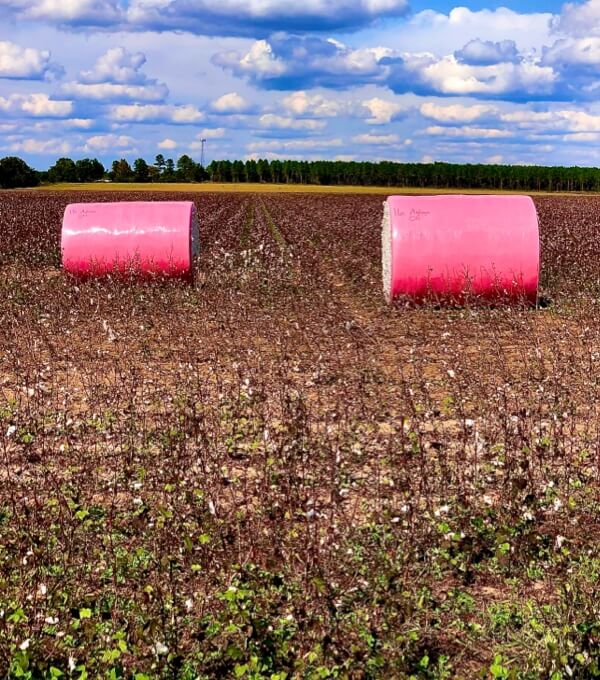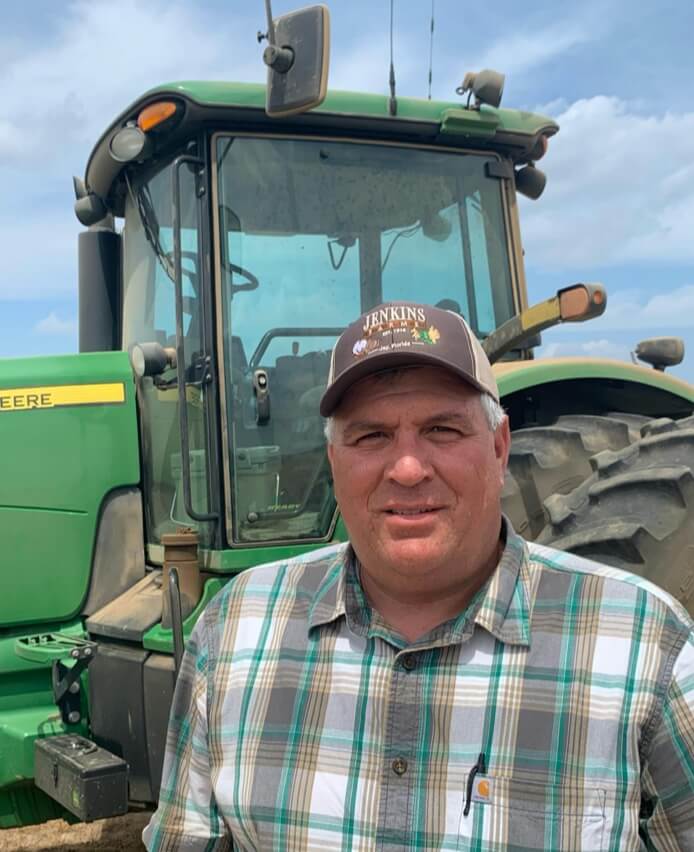
(Featured Image) Side-by-side in 2023, AgLogic at 5 lbs. per acre increased cotton lint yield by 188 lbs. per acre in a two-acre field trial comparison.
No, it’s not quite time to drag out the cotton picker but give it a few days and growers will be waking up in the fall to implications of decisions they’re making right now.
One thing about cotton – it’s always right around the corner, and you’re about to get it right between the eyes. Planting. Thrips. Weeds. Plant bugs. Drought. A hurricane. Something you’ve never seen before. Something China did. Something our own people did.

Just ask anybody. They’ll tell you.
“I love to grow cotton,” says Ryan Jenkins, Jay, Florida. “But just because I love it doesn’t make it easy. Every year I keep trying to make it easier, or at least more dependable. I can’t control the weather or the global economy, so that leaves what I can control or at least influence.
Early season strategy is key to setting the stage to influence those variables. Jenkins focuses on those inputs because he knows he has choice and a certain measure of control. “We have a lot of alternatives in terms of varieties, seed treatments, at-planting treatments and post-plant treatments,” Jenkins says. “That gives us a quite a few options when we’re planning how we’re going to approach the upcoming year.”
A 188 Pounds-Per-Acre Bonus
“I like to be proactive as much as I can and where it makes sense,” Jenkins says. I’ve gone back to AgLogic aldicarb at planting because it’s hard to argue with the results. If a product increases your yield 188 pounds of lint per acre, you’d be kinda crazy not to use it.”
That figure – 188 lbs. of lint per acre – is how much aldicarb improved his cotton yield in 2023 on a comparison basis.
“I had two acres where I did not apply aldicarb,” he says. “So that yield and lint figure is compared to cotton where I did apply aldicarb at planting at a rate of 5 pounds per acre.”
On-Farm Research
That was last year’s results, but it wasn’t much of a surprise, according to Jenkins. “We turn this entire farm into a research plot of sorts,” he says. “We’re constantly looking at everything from varieties to seed treatments to pesticides to weed management options to just about anything you can test that applies to a cotton plant.”
He does the same thing with other crops such as peanuts as well. He believes the additional effort spent evaluating competing inputs helps him identify the inputs that will give him that crucial edge in subsequent years.
“We’re farming for much more than this year,” he says. “We take a long-term approach to the challenge. “It’s not something you can just wake up one day and say, ‘hey, I think I’ll throw that seed in the ground this year and splash a little of that on it for good measure.’ We really look at the differences in a side-by-side comparison. Then, if we put it in the ground on a broad-scale basis in following years, we have a pretty good idea what it’s going to do on this farm. Or, at least we have a pretty good idea what it can do if all the unknowns at least give us a chance.”
Jenkins is no stranger to his share of “factors beyond control”. The Florida Panhandle is particularly susceptible to drought. If that doesn’t quite fit the hardship bill one season, there’s usually a hurricane lurking around for good measure.
Luck Of The Cosmos
Jenkins tries not to dwell on the luck too much. As far as he’s concerned, luck is at least a little bit of what you make it.
“Obviously, you can’t guarantee the weather and significant meteorological events in any year,” Jenkins says. “But you can set yourself up to achieve a certain level of success depending on the inputs you choose and how you manage the crop. As long as the unknowns don’t sabotage what you’re putting in place, you have a reasonable chance.
Early season pest control is always a key concern heading into a new season. Basically, there are two strategies – act or react.
“Early season I’m very focused on pest control,” he says. “We have nematodes, and thrips are always an issue. Aldicarb takes care of that very efficiently. It saves us running a sprayer across the field every time a problem pops up. When you factor the price of aldicarb into your budget, keep that in mind. Not just that, but also the inconvenience of having to stop everything you’re doing to put a spray rig in the field.”
Out Of The Ground Vigor
Even that advantage is not the complete picture of what sold Jenkins on the product several years ago. “It takes a little effort to use it,” he says. “But it’s worth it. When we were experimenting with it, you couldn’t help but notice the cotton with aldicarb under it jumped out of the ground like it wanted to grow. I’ve been a cotton grower for a long time. It still makes me feel good when I see that.”
As planting approaches, Jenkins sums it up succinctly. Thinking about what’s ahead over the next few weeks with a characteristic optimism about what lies at the finish line, he projects his plan forward: “As challenging as it is to grow cotton these days,” he says with quiet determination, “it’s a very good feeling to know I have the best, most dependable chance of making money if I put aldicarb in my planter.”